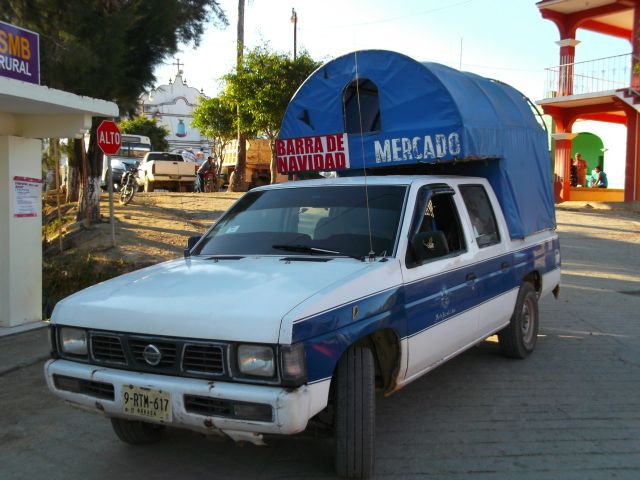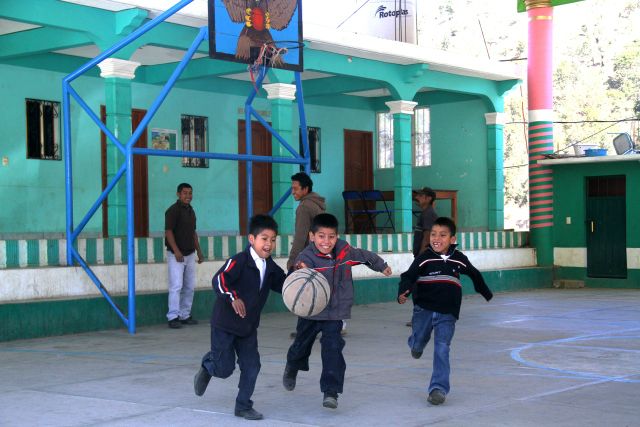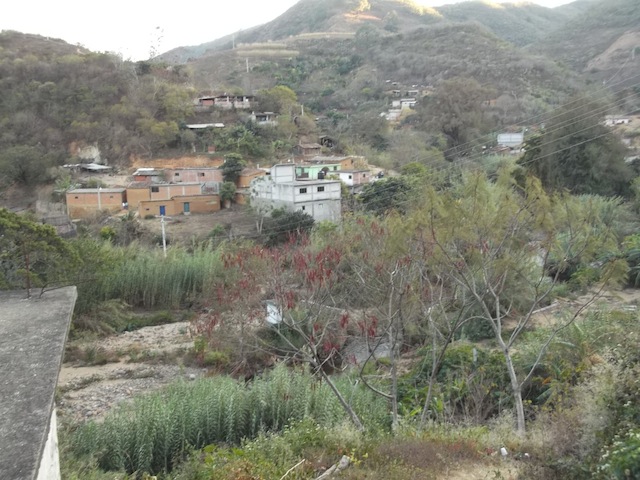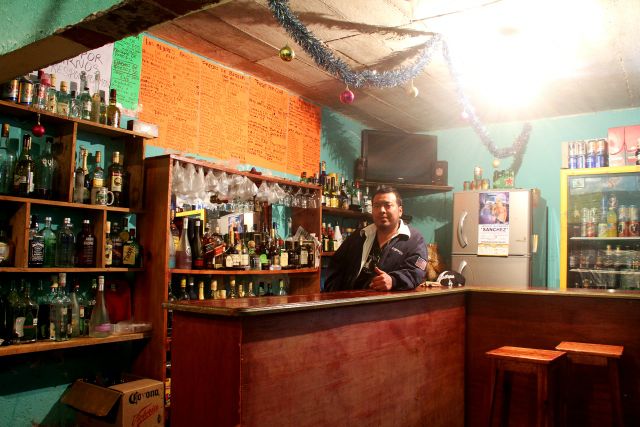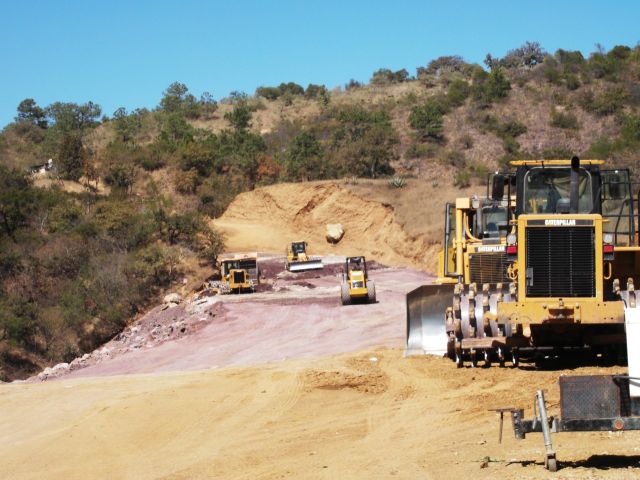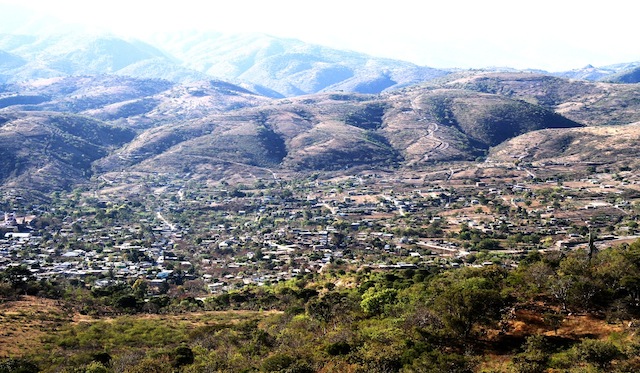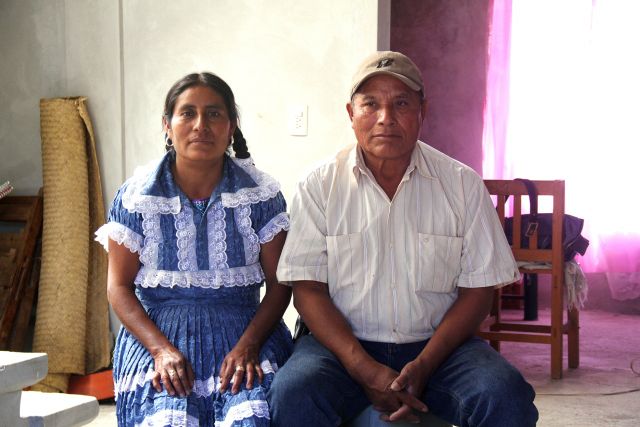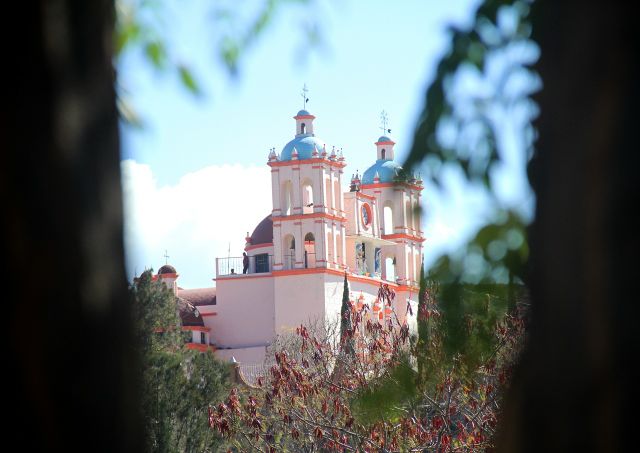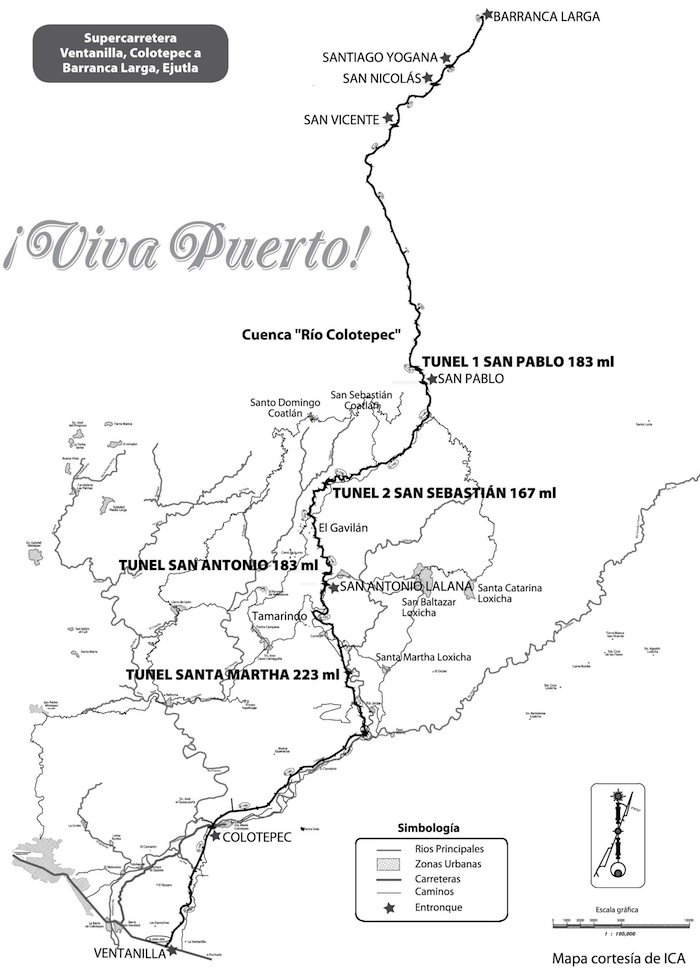
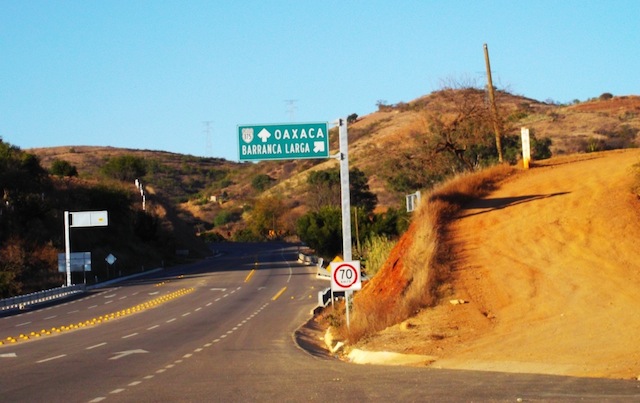
Photo by Barbara Joan Schaffer
Journey to the End of the Super Highway
Four of us set out at 5:30 a.m. on January 24 to make the fivehour trek to San Pablo Coatlán, the fourth junction of the super highway. (The first junction from Puerto Escondido is in Ventanilla, Colotepec, the second in Santa María Colotepec, and the third in San Antonio Lalana (see ¡Viva Puerto! #11). The entourage included the photographer Lalo Romero, our driver Marcial and his wife María. The vehicle was a pick-up truck that usually serves as a colectivo carrying passengers from the Barra de Navidad to the market.
We followed the same dirt road through the mountains that ICA (the highway construction company) uses to bring in its equipment and the road was wide and well maintained. The route took us through Santa María Colotepec, Santa Martha Loxicha, San Baltazar Loxicha, and Santa Catarina Loxicha. The high point (literally and figuratively) of the journey was the awe-inspiring view, at about 1,400 meters above-sea-level, of the Southern Sierra from Santa Catarina’s Cerro Flores ridge.
The bustling village of San Pablo Coatlán with a population of 2007, is both the county seat (cabecera municipal) of the eponymous municipality and its largest community. It also stands the most to gain from the highway, as it will be the main entrance for San Geronimo and San Sebastián to the west and Miahuatlán to the east. At present there are only dirt roads connecting San Pablo to its neighbors, but, according to Municipal President Abraham López Martínez, there is a plan to build a state highway through San Pablo in the next five years that will connect Miahuatlán on Highway 175 to Highway 131 near the entrance to Juquila. Besides opening up the region, it would also be a boon for Puerto tourism. It would take only 40 minutes on the super highway to reach San Pablo and then another hour or two to get to Juquila or San José del Pacífico.
When asked why construction was being blocked in San Pablo, Abraham López said that people felt that they were not adequately compensated for their land. He said that there had been irregularities in the way a previous Bienes Comunales had allocated funds from the state. Beyond that the truck drivers are demanding more money. Nonetheless, the municipal president said that he thought construction would start again in two weeks.
José Luis Mera is already prepared for Puerto tourism to San Pablo. This young man, who speaks fluent English, the result of having lived 12 years in the U.S., has opened El Patrón Sports Bar which features cocktails like Sex on the Beach and such exotic drinks as Remy Martin cognac as well as the local mescal. There is no cell connection or Internet in San Pablo so people tend to talk to each other. Jose Luis’s uncle complained about how things had changed for the worse since he was a young man when people worked hard and ate healthy food. José Luis, at 28, says he would not like to have lived back then.
After spending the night in San Pablo, which was in the midst of its annual fiesta - four trampolines for the children and a dance that went on past midnight – we set out the next morning for San Vicente Coatlán. The town of San Vicente is a mere 18 kilometers from San Pablo on the super highway, but we couldn’t access the highway from San Pablo, and the drive on back roads took over an hour. We were, however, able to drive a few kilometers on the highway south of San Vicente, before taking the turn-off to that town.
Now we were in the Central Valley and the pine forests were replaced by cacti. Even more striking are the differences between the peoples of two adjacent municipios. The residents of San Pablo are mostly the descendants of people who migrated from different areas of the Central Valley after the Spanish conquest. That is to say, unlike their neighbors, they do not speak Zapotec nor do they have any indigenous customs or identity. In San Pablo we were told that the people of San Vicente “keep to themselves.”
“We keep to ourselves,” the municipal president of San Vicente, Miguel Chávez Osorio, told me with pride. He said San Vicente had one of the highest percentages of Zapotec speakers, himself included, and that the people maintained their traditions. Indeed, we noticed that some of the town women wore dresses we had only seen in guelaguetzas. San Vicente is known for its embroidered blouses, its mescal and the jarabe chenteño, a dance that features spicy verses.
The super highway will have little practical value for San Vicente, as there is already a paved highway connecting the town to Ejutla. On the other hand, Chávez Osorio fears that the junction will bring in crime. It will also make it more difficult for the farmers to get to their fields.
The biggest problem facing the municipality, however, is the migration of its inhabitants to the U.S. Chávez Osorio said that most of the young people who leave never return and that those who do often come back sick or with problems with drugs. In fact, the 2010 census shows that only 18% of the male population in San Vicente is between the ages of 15-29, as compared to 25% for the state and 30% for San Pedro Mixtepec. The population of San Vicente, according to the 2010 census, is 3,964 and that of San Pablo 4,167.
From San Vicente it was a short ride on the 4-lane, still unpaved, super highway to its terminus in Barranca Larga, Ejutla where it connects to highway 175 to Oaxaca. Highway 175 has four lanes between Barranca Larga and Oaxaca, but only two from Barranca Larga to Pochutla.
It was 5:30 Saturday afternoon, exactly 36 hours after our departure when we reached our goal, the highway’s end. Then we turned right onto 175 for our return trip. After making stops in Miahuatlán and San José del Pacífico we finally got back to Puerto at 2 a.m. Barring construction delays, that trip from Ejutla to Puerto will only take a little over an hour by mid 2015.
As of mid-February construction in San Antonio Lalana and San Pablo Coatlán had come to a halt. (See ¡Viva Puerto! #11). The local authorities were still demanding more compensation from the government for their land, and the truck drivers union more money. An ICA engineer was assaulted in Lalana. At this point it is impossible to know when the highway will be finished, but ICA and the State and Federal governments remain committed to the project.
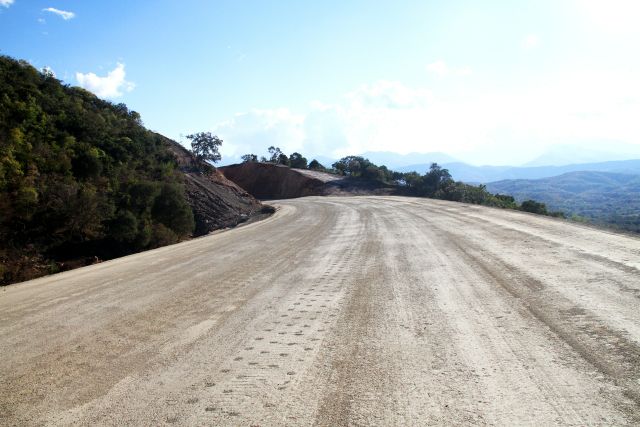
Photo: Lalo Romero
CORRECTION
In ¡Viva Puerto! #11 it was reported that all the properties in San Antonio Lalana had clear titles (escrituras). While it may be that some properties do have escrituras, most have actas de posesión issued by the Representation of the Lands Belonging to the People of San Antonio Lalana. The Representation does, however, have an escritura – issued in 1935 - for all of its territory. Whether or not this escritura is valid is now under judicial review by the Agrarian Court Tribunal.

